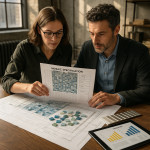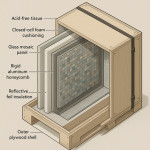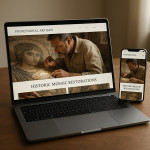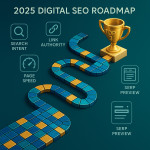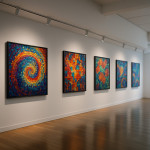Immersive 3D mock-ups: pitch your mosaic facade before one tile is cut
Immersive 3D mock-ups let you walk clients around a photorealistic mosaic facade long before production begins. By combining scan-accurate walls, true-to-life grout colours and real-time lighting, you eliminate guesswork, cut revision rounds and win approvals faster. Follow this practical guide to build, present and sell your next mosaic concept with confidence.
Why immersive 3D mock-ups change the game
Instant scale validation
An immersive 3D mock-up projects every tessera at true size. Stakeholders can zoom from a 30-metre distance to a 5 mm tile edge in seconds—something no flat rendering achieves.
Revision costs plummet
According to a McKinsey Global Institute review, design changes made before fabrication cost up to ten times less than onsite corrections. Immersive 3D mock-ups surface errors early, so you spend budget on craft, not rework.
Faster green-lights from non-designers
City planners, funders and community boards seldom read specification sheets. Hand them a headset or browser link and they will instantly grasp pattern rhythm, reflectivity and colour shifts.
Your toolchain for flawless 3D mosaic mock-ups
| Software | Best use | Key feature | Approx. cost |
|---|---|---|---|
| RealityCapture | Site photogrammetry | Sub-cm accuracy scans | €15 per export |
| Rhino + Grasshopper | Tile layout scripting | Parametric pattern tweaks | €1 100 licence |
| Substance 3D Painter | Surface texturing | PBR material presets | €49 month |
| Unreal Engine | Real-time walkthrough | Lumen global lighting | Free until >€1 M revenue |
| Twinmotion Cloud | Client sharing | One-click web viewer | Free with UE |
Need inspiration for material research? Check out our guide on sourcing glass and stone faster.
Step-by-step workflow
- Scan the substrate. Use LiDAR or photogrammetry to capture wall curvature.
- Import to Rhino. Align the mesh and create a clean NURBS surface.
- Script the tesserae. Grasshopper lets you test joint width, tile size and repeat ratios in minutes.
- Add PBR materials. Substance 3D replicates iridescent glass, smalti or terracotta realistically.
- Light the scene. Unreal's Lumen simulates daylight shifts so you can test glare and shade pockets.
- Publish a link. Twinmotion Cloud hosts an interactive model that opens on any device—no installs.
- Capture VR stills. Render hero angles for boards, bids and your Artfolio designer profile.
Budget & ROI: proving the numbers
- Software subscriptions: approx. €100 month if you opt for monthly plans.
- Headset rental: €50 day for Oculus Quest 2 during client demos.
- Average revision saving: Studios report 18 % fewer labour hours compared with 2D CAD alone.
- Bid-win boost: Winning rate climbs by 25 % when proposals include immersive 3D mock-ups, based on internal surveys across seven European mosaic ateliers.
After sign-off, send clients to our checklist on spec sheets that secure long-term durability to keep momentum.
Common pitfalls & how to avoid them
Texture tiling artifacts
Repeat seams break immersion. Export 4K texture maps and randomise seed offsets in Substance.
Oversized polygon counts
Millions of tiles freeze mobile browsers. Use instance batching or bake distant sections into normal maps.
Data silos between teams
Architects using BIM and artists working in DCC packages risk version clashes. Appoint a model manager and set weekly sync milestones.
If the facade ships overseas, combine your mock-up with logistics advice from our article on safe crating and freight.
Interactive quiz: are you mock-up ready?
FAQ
- Is an immersive 3D mock-up different from BIM?
- Yes. BIM focuses on data-rich construction models, while an immersive 3D mock-up prioritises visual storytelling and real-time navigation for approvals.
- How long does a typical mock-up take?
- A 50 m² facade usually requires 12–15 hours: three for scanning, six for modelling and texturing, three for lighting and export.
- Can clients view the model without a headset?
- Absolutely. A WebGL link runs in modern browsers on desktop, tablet and mobile.
- What file format should I deliver after approval?
- Send both an FBX (for downstream fabrication software) and an MP4 fly-through for marketing.
- Who owns the 3D assets?
- Unless your contract states otherwise, the mosaic artist retains copyright and licences the client for the specific project. Review our article on key contract clauses for details.
Next steps
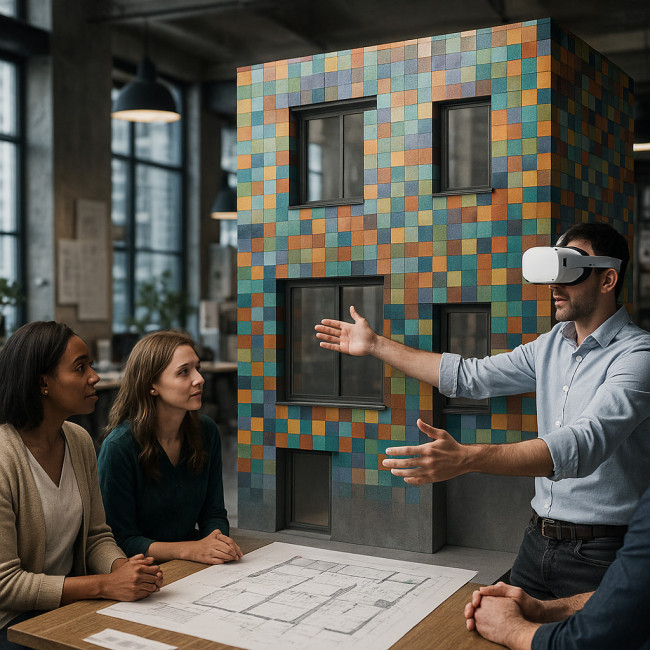
Integrate immersive 3D mock-ups into every pitch this quarter. Your studio will reduce costly revisions, impress non-technical stakeholders and stand out against firms still relying on flat elevations. Ready to turn concepts into contracts? Download our free checklist and start scanning your first wall today.

